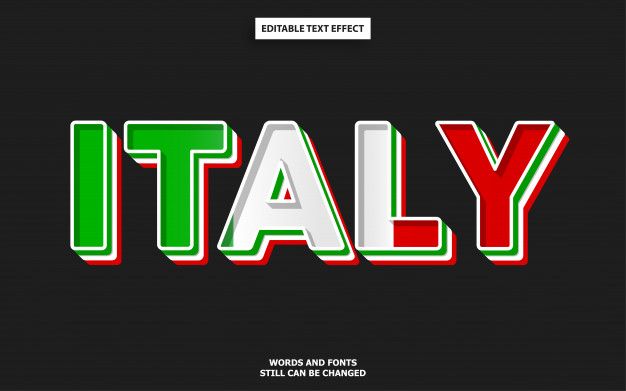Typography is more than just the way words look—it’s an art form that communicates emotion, heritage, and creativity. When we talk about “Tip. meaning Italy typography,” we’re exploring a fascinating intersection of design, culture, and language. Italy, known for its timeless art and architectural beauty, also carries a deep influence in the world of typography. The word “Tip.” here can be interpreted as an abbreviation of “Tipografia”—the Italian term for typography. Understanding its meaning and evolution in Italy gives us a window into how design and language merge in Italian culture.
1. Understanding the Word “Tip.” and Its Meaning in Italy
In Italian, Tipografia literally means “printing” or “typography.” It comes from the Greek roots typos (meaning “form” or “impression”) and graphein (meaning “to write”). When abbreviated as “Tip.”, it’s commonly used in Italy to denote printing shops, design studios, or typographic projects. You might see Tip. on signs, logos, or labels—short for Tipografia Rossi, Tip. Milano, or Tip. Firenze, for instance.
Thus, “Tip. meaning Italy typography” often refers to the traditional and modern practices of type design and printing in Italy. It symbolizes a mix of craftsmanship, artistic legacy, and technological progress. Italians treat typography not merely as functional text but as a visual expression tied to identity and aesthetic beauty.
2. The Historical Roots of Italian Typography
Italy holds an honored place in the history of typography. In the early days of movable type printing during the Renaissance, Italy became a central hub for innovation in type design and printing techniques. Cities like Venice, Florence, and Rome were home to pioneering printers who helped shape the look of modern type.
The Venetian Revolution of Type Design
Venice was one of the first European cities to embrace the printing press. Aldus Manutius, a Venetian printer from the late 15th century, transformed the world of typography with his Aldine Press. He is best known for:
- Creating the italic typeface, inspired by humanist handwriting.
- Introducing small, portable books—precursors to modern paperbacks.
- Establishing standards for punctuation and font proportions.
The legacy of Aldus Manutius is still visible in contemporary typography. His elegant, legible fonts laid the groundwork for what we now associate with Italian refinement and minimalism in design.
Roman Influence on Type
While Venice defined the form, Rome defined the spirit. Roman inscriptions carved into stone during the ancient empire—like those seen on Trajan’s Column—remain a gold standard for classical typography. The Trajan typeface, used in countless modern designs, is directly derived from these ancient letterforms.
In Italy, the line between architecture and typography has always been blurred. The Roman capital letters were not just linguistic symbols but architectural elements—designed to complement monuments and communicate authority. This tradition continues in Italian design schools and studios that see typography as part of the visual architecture of communication.
3. The Italian Design Philosophy in Typography
The Italian approach to typography is rooted in harmony, proportion, and emotion. Italian designers emphasize not only readability but also personality. Whether in fashion, architecture, or graphic design, Italy’s philosophy revolves around blending form and function.
Elegance Meets Expression
Typography in Italy often mirrors the country’s larger design identity: elegant, expressive, and timeless. Italian typefaces typically have:
- Clean lines and balanced proportions.
- Subtle details inspired by calligraphy.
- A sense of rhythm and musicality in spacing and curves.
This sense of artistry sets Italian typography apart from the colder, more industrial styles seen elsewhere in Europe. It feels handcrafted, even when digitally produced.
Typography as Cultural Heritage
In Italy, typography isn’t just about printing—it’s about preserving culture. Traditional tipografie (printing houses) have long been family-run institutions, passing down their craft for generations. These workshops are as much a part of Italy’s cultural identity as its leather artisans or glassmakers.
When Italians use the abbreviation “Tip.”, they are not just marking a business; they’re signaling a lineage of craftsmanship, history, and pride in printed beauty.
4. Modern Italian Typography: Between Tradition and Innovation
As digital tools transformed the world of design, Italian typography also evolved. The country’s designers embraced new technology while keeping a strong link to their historical roots.
Digital Renaissance
Modern Italian type designers like Luca Barcellona, Giambattista Bodoni, and contemporary studios such as Molotro or CAST Foundry have revitalized Italian typography for the digital era.
- Bodoni, originally from Parma, designed one of the world’s most iconic serif typefaces in the late 18th century. His work emphasized contrast between thick and thin strokes—a signature of Italian style that remains popular in luxury branding today.
- Luca Barcellona, a modern calligrapher, blends traditional handwriting with digital design, showing how the spirit of tipografia continues to evolve.
In the digital space, “Tip. meaning Italy typography” now refers to the fusion of classical craftsmanship with cutting-edge software. From branding to UX design, Italian typographers are known for maintaining elegance and precision, even in minimalist or experimental formats.
5. Typography in Italian Branding and Identity
Italy’s global reputation for fashion, automotive design, and art also extends to typography. Many of the world’s most recognizable Italian brands use distinctive type to reflect their identity.
Luxury and Simplicity
Brands like Gucci, Prada, and Ferrari rely on minimalist but highly refined typography. Their fonts communicate sophistication without being loud—echoing Italy’s design philosophy of understated elegance.
- Gucci uses geometric typefaces that balance modern and classic appeal.
- Ferrari’s logo, rooted in sans-serif clarity, emphasizes speed and precision.
- Prada often uses serif fonts inspired by Bodoni, connecting luxury with tradition.
Typography here isn’t just visual—it’s emotional. It tells a story of Italian craftsmanship, passion, and heritage.
6. Typography in Italian Art, Publishing, and Architecture
Beyond branding, typography in Italy plays a key role in publishing, signage, and architecture. Italian books, posters, and city signs reveal a consistent aesthetic balance.
In Publishing
Italian book covers often feature bespoke typefaces, carefully chosen to enhance the literary work’s mood. From classical publishers like Einaudi to independent presses, typography remains central to visual storytelling.
In Public Spaces
Walk through cities like Florence or Milan, and you’ll notice how street signs, plaques, and store names often use serif fonts reminiscent of Roman inscriptions. The typographic consistency preserves urban charm and historical continuity.
In Architecture
In modern Italian architecture, typography is often integrated into the building itself—etched into marble, embedded in glass, or styled in steel. It’s a continuation of the Roman principle: that letters are as architectural as they are communicative.
7. The Global Influence of Italian Typography
Italian typography has influenced global design education, particularly through the Bodoni style and the Renaissance letterform aesthetics. Designers around the world study Italian typefaces for their balance, precision, and emotional depth.
Modern type foundries continue to draw from Italian inspirations:
- The Bodoni type family, used in magazines and luxury brands worldwide.
- Venetian-style typefaces, which inspired the serif fonts we use in print today.
- The Humanist movement in design, emphasizing organic curves and natural proportions.
Even the minimalist typography of modern web design carries echoes of the Italian Renaissance’s devotion to proportion and clarity.
8. The Future of “Tip.” in Italian Typography
As we move into an era of AI-generated fonts and virtual design spaces, Italy continues to champion authenticity and artistic integrity. The future of “Tip.” meaning Italy typography lies in preserving tradition while adapting to new digital languages.
Italian typographers are experimenting with:
- Variable fonts that adjust to screen size and user experience.
- Sustainable printing practices.
- Open-source collaborations for multilingual design.
Yet, amid all this innovation, the heart of Italian typography remains unchanged—beauty through balance, expression through form.
Conclusion: The Lasting Beauty of “Tip.” in Italy
To understand “Tip. meaning Italy typography” is to appreciate the Italian soul of design. It’s about letters that breathe life, history, and identity. From ancient Roman engravings to sleek modern branding, Italian typography captures the nation’s enduring love affair with art and communication.

